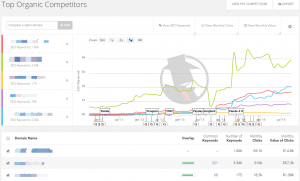Twitter recently announced their subscription module called Twitter Blue, hence finally taking a plunge into the world of subscriptions. It is available for their ‘power users’ in Canada and Australia with premium features at a monthly subscription fee. Twitter was considering the move to subscriptions since their ad revenues saw a dip, and the company was looking for ways to diversify revenue streams.
It doesn’t come as a total surprise as subscriptions today are omnipresent across several industries, digital and non-digital alike. According to research, revenue for subscription businesses grew 5x faster for the last decade. While sectors such as OTT, ecommerce, and SaaS, have thrived on subscriptions, traditional industries like automobiles, manufacturing, and hospitality also want a piece of this growing market.
This article will dive into what makes subscriptions a powerful model for your business, how several industries are using them, and things to consider before shifting to the subscription business model.
How Subscriptions Power your Growth
While the pandemic substantially accelerated their adoption, subscriptions have been making their way into several industries for some time now. The subscription and billing market size is market size to projected to grow to USD 7.8 billion by 2025 from USD 4.0 billion in 2020. The ever-increasing popularity of subscriptions is owing to many factors, such as:
1. Predictable Revenue
Recurring revenue is the most attractive aspect of subscriptions. Recurring revenue helps in keeping the cash flow healthy and insulates the business from market fluctuations. It lends the business some financial and operational stability, which is a crucial consideration for investors. Businesses with a large portion of their revenue as recurring revenue are considered to be eight times more valuable than the ones with very little recurring revenue, according to John Warrillow (author of The Automatic Customer: Creating a Subscription Business in Any Industry).
2. Accurate Forecasting and Expense Planning
With a certain number of subscriptions already under your belt, it’s easier to forecast demand and revenue more accurately. Unlike one-time purchases, subscriptions give you access to data across the customer’s lifecycle. Forecasts can be done based on real-time customer activity, such as usage, upgrades, or cancellations. Accuracy in forecasting helps in planning for expenses in advance and reinvesting opportunities, which is another way to optimize your growth.
While B2C businesses that offer subscriptions for physical goods have to think about the logistics involved such as planning inventory and shipping, recurring revenue gives them considerable flexibility and predictability in budgeting for these front-ended activities.
3. Revenue Expansion Opportunities
Did you know that it costs 5x more to acquire new customers than to retain existing ones? It is easier for subscription businesses to get customers to upgrade to a higher plan or cross-sell for related products or services. That way, you get additional revenue and a higher customer lifetime value without extra customer acquisition costs.
That said, subscriptions demand higher customer satisfaction and engagement so that customers do not churn out.
How are Various Industries Using Subscriptions?
While we have always seen subscriptions in OTT and ecommerce industry, some industries are using subscriptions to boost their growth. Let’s look at some examples:
E-learning
Over 1.2 billion students graduated online during the pandemic. Even back then, e-learning was not a new concept, but digital acceleration has helped Edtech businesses grow by leaps and bounds.
Take Coursera, for example, which saw a 66% boost in their users in 2020. On the other hand, teachers are increasingly using Google Classroom and Blackboard subscriptions to organize their lessons and distribute study materials.
Apart from the curriculum and course-based subscriptions in the e-learning space, there are also some more creative options such as curated boxes that nurture children’s creativity while learning.
In 2019, the global online e-learning market size was approximately $ 101 billion. By 2026, it is forecasted to grow exponentially to over $ 370 billion. It’s an opportunity up for grabs for businesses, and subscriptions will help optimize the growth.
Publications
In March 2020, The New York Times saw a drop in their ad revenues by 15%. But they saw an increase in another revenue stream. You guessed it; the digital subscribers were at their all-time highest. This helped them cushion the fall in ad revenue. The trend continues in 2021, with subscriptions and digital advertising making over 50% of the total revenue.
As the consumers move towards digital-first experiences, the publications industry is starting to learn how to provide a great digital experience while ensuring that subscribers don’t churn.
Customers are willing to pay for quality journalism and premium content. It’s all about balancing great content with the flexibility of subscriptions.
Health and Wellness
We’re not new to gym subscriptions, but health-conscious consumers are increasingly looking for options to stay healthy from the comfort of their homes. The interest in digital fitness devices has boomed by 500%.
The health and wellness industry is tapping this growth by offering creative subscription options. For example, Peloton offers exercise bike subscriptions with WiFi connectivity to track their activity and share it. Peloton’s quarterly revenue has increased by 102.97% QoQ in 2021.
Physical fitness is not the only space using subscriptions. There are several great subscriptions that cater to mental well-being. Take TheraBox, for example, a subscription box mindfully curated by therapists to reduce stress and encourage self-care.

Image source: mytherabox.com
Three Things to Consider when Shifting to Subscriptions
Now that we’ve seen the power of subscriptions and how various industries use subscriptions to fuel their growth, are you considering introducing subscriptions for your business?
Here are some things to consider before you shift to subscriptions:
1. Choose the Right Pricing Strategy
There are several pricing models available for subscription businesses, such as:
- Tiered pricing: which has features/services divided into various tiers
- Value-based pricing: which charges the customer based on a value metric, such as ‘number of users’
- Usage-based pricing: which charges the customer depending on their usage, also known as pay-as-you-go pricing
Choosing the suitable pricing model depends on your business’s nature and how your customers use your products and services. It always helps to experiment and iterate to choose the pricing sweet spot.
2. Manage Recurring Payments Efficiently
Naturally, a subscription offering means your business will be receiving recurring payments. As your business grows and subscriptions increase, it becomes more challenging to manage the subscription invoicing and payments. Subscribers need to have the flexibility to upgrade their subscription, pause it or even cancel it any time.
Without automation, processing and managing these recurring payments can become an operational nightmare. You need to have a robust recurring payment platform in place.
3. Provide Excellent Customer Service
Whether it is annual or monthly subscriptions, customers have to be won over at every renewal cycle. There’s no way around providing exceptional customer service that goes a long way in retaining customers and making them feel valued.
It is also helpful to consider how you make it a great experience for customers at every stage of the customer journey – from onboarding to delivery to renewal. This will help you identify signs of dissatisfaction earlier and avoid churn proactively.
Are you Subscribed?
Subscriptions have not only helped businesses survive but thrive in competitive markets. With the right subscription management platform, the growth opportunity presented by subscriptions is all yours to grab.
Book a demo to see how Chargebee can help you scale your subscription business.
Business & Finance Articles on Business 2 Community
(61)
Report Post








